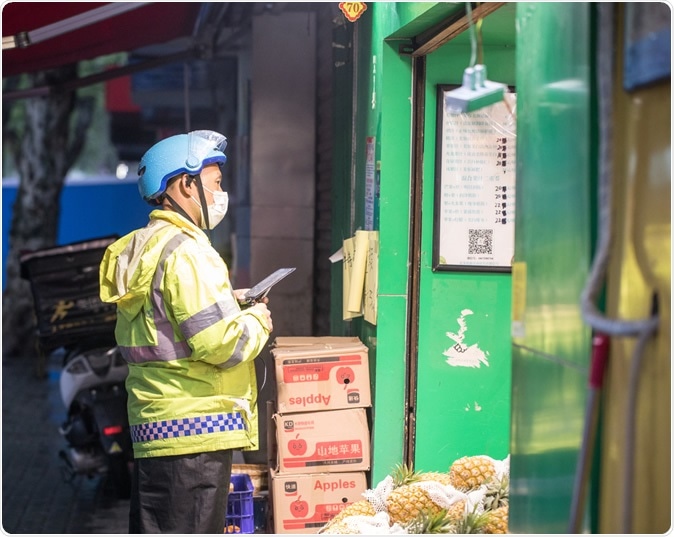Most countries are at a standstill, with social distancing and physical distancing measures in place to reduce the spread of the novel coronavirus. Now, a new transmission model of the coronavirus disease (COVID-19) confirms that social distancing measures were effective in Wuhan City, the epicenter of the coronavirus pandemic, and Shanghai in China.
The international team of scientists from China, Italy, and the United States wanted to gauge the effectiveness of these measures in stopping the transmission of the novel coronavirus, now called the severe acute respiratory syndrome coronavirus 2 (SARS-CoV-2). Further, they want to determine the interplay between age, contact patterns, social distancing, vulnerability to infection, and COVID-19 dynamics.
To arrive at their findings, published in the journal Science, the team analyzed contact survey data from 636 participants in Wuhan City, in Hubei Province, and 557 participants in Shanghai, China. The team has found that social distancing alone, as imposed during the peak of the pandemic, is enough to control the spread of SARS-CoV-2.

Wuhan, Hubei / China - April,3,2020 : Wuhan Guanggu shopping city still have guards screening process after Chinese government canceled the lockdown in Wuhan. Image Credit: Mark Brandon / Shutterstock
Effective social distancing measures
Dr. Hongjie Yu of Fudan University and Dr. Marco Ajelli of the Bruno Kessler Foundation, along with their team, studied contact survey data for both locations before and during the outbreak. They also analyzed the contact tracing information in Hunan Province.
They found that the daily contacts were decreased by seven to eight-fold during the social or physical distancing period, with most interactions occurring only in the household. Before social distancing measures were implemented, the average interpersonal contacts were between 14 and 20 people per day in Wuhan and Shanghai. It dropped to about two contacts per day in both locations.
The results also reveal that from 78 percent to 94 percent of these contacts only occur at home, between family members or housemates. With all the data gathered, the team used the survey data and contact tracing data in Hunan Province to develop a mathematical model of the COVID-19 transmission dynamics.
The model estimated that children under 15 are approximately 40 percent as vulnerable to infection with SARS-CoV-2 infection as elderly people who are more than 64 years old. Further, it showed that even if school closures cannot stop the transmission of the virus, they can reduce the peak incidence by as much as 40 to 60 percent, delaying the outbreak.
“Our study provides evidence that the interventions put in place in Wuhan and Shanghai, and the resulting changes in human behavior, drastically decreased daily contacts, essentially reducing them to household interactions. This leads to a dramatic reduction in SARS-CoV-2 transmission. As lockdown measures are put in place in other locations, human mixing patterns in the outbreak period could be captured by data on within-household contacts, which are available for several countries around the world,” the researchers concluded in the study.
COVID-19 social distancing situation
Hubei Province, where Wuhan City is located, has a total of 68,128 confirmed cases and 4,512 deaths due to the COVID-19, while Shanghai has reported 647 confirmed cases and seven deaths. China was initially the first and hardest-hit nation of the novel coronavirus pandemic. Still, due to social distancing measures, it had flattened the curve and has reported slowed viral transmission rates.
Wuhan City was placed on lockdown on Jan. 23 but has now started to reopen establishments, schools, and other businesses. Hospitals are regaining momentum and have discharged most of the COVID-19 patients, which means that the country, especially Hubei Province, is slowly starting to recover.

Wuhan, China - 04.21.2020: Wuhan after the opening up, the city is still recovering from the COVID19, with many restrictions still implemented. Image Credit: Andrew Joseph Braun / Shutterstock
On the contrary, other countries across the globe are still grappling with the pandemic, with most healthy systems overwhelmed with the high number of cases. For instance, the United States has reported more than one million confirmed cases and at least 63,000 deaths. New York is the hardest-hit state, with over 304,000 cases.
Most countries are still in lockdown, while the number of cases continues to increase. Social distancing measures are in place to stem the spread of the virus. This measure may help flatten the curve by reducing the speed of the virus transmission, to help ease the burden on hospitals and health workers.
Source:
Journal reference: